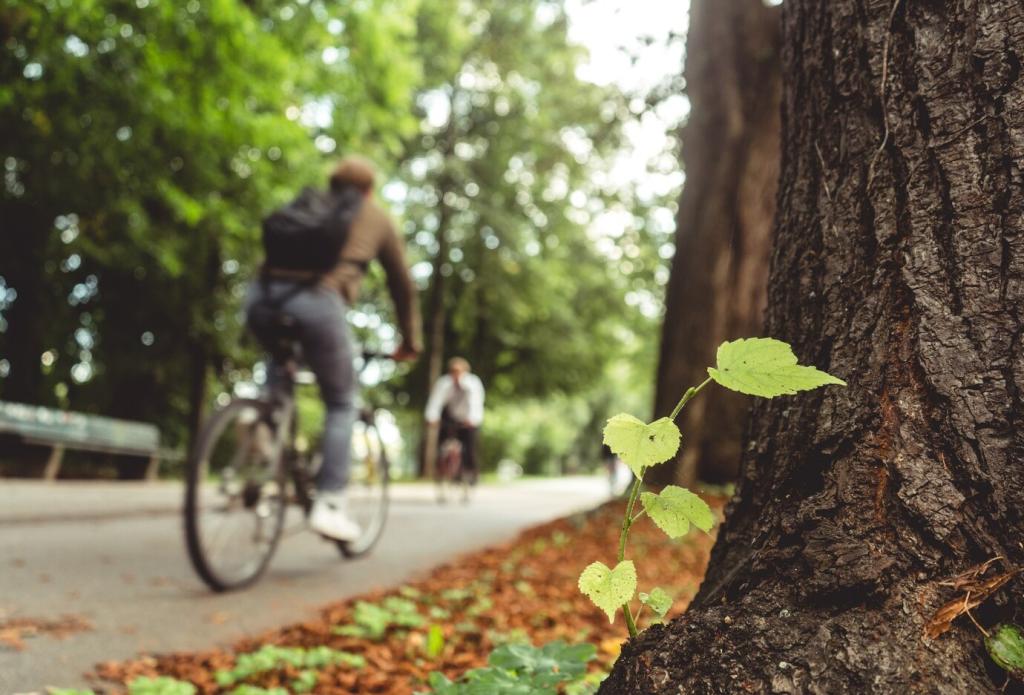Community Gardens: A Haven for Urban Wildlife
Chosen theme: Community Gardens: A Haven for Urban Wildlife. Step into a patchwork of raised beds, buzzing borders, and tiny green corridors where city life meets nature. Discover how shared plots nurture birds, bees, and beneficial insects, and join our community by subscribing for seasonal habitat tips.

Why Urban Wildlife Thrives in Community Gardens
01
Microhabitats Hidden in Plain Sight
A cracked brick edging becomes a lizard sun spot, while a tangle of mint hides ground beetles hunting aphids at dusk. Even a leaning trellis creates shaded pockets that stay moist for snails and worms. Spot a tiny garden guest today and share your sighting with our community.
02
Pesticide-Free Food Webs
Community gardens often favor hand picking pests and companion planting, letting beneficial insects rebound. Lady beetles, lacewings, and parasitic wasps quickly find prey, feeding birds in turn. This gentle balance stabilizes beds and reduces outbreaks. Want more nature-friendly tactics? Subscribe for our monthly wildlife gardening checklist.
03
Green Corridors Through Concrete
A sequence of tree pits, balconies, and community plots functions like stepping stones between city parks. Butterflies follow nectar trails, and songbirds hop hedge to hedge. Your garden can be the critical middle link. Tell neighbors about it and invite them to add flowering waypoints nearby.
Designing Your Plot to Welcome Wildlife
Choose native perennials that bloom in succession from early spring to late fall, ensuring reliable nectar and pollen. Mix heights and flower shapes to fit different tongues and beaks. A ring of natives around vegetables doubles as a welcome sign for pollinators and reduces wind stress.
Designing Your Plot to Welcome Wildlife
A shallow dish with pebbles makes a safe landing pad for bees and butterflies. Keep water fresh, add a muddy corner for swallow nest material, and place flat stones for basking insects. These tiny oases cost little but draw surprising visitors within days. Share your first splashy guest.
Designing Your Plot to Welcome Wildlife
Combine a low edge of grasses, a mid layer of herbs, and a few shrubs or trellised vines to create cover from cats and wind. A small log pile or bundled stems provides overwintering sites. Post a photo of your layered corner to inspire others building refuge.
Citizen Science in the Garden
Pin a clipboard near the gate or add a shared digital document. Record date, species, behavior, and plant used. Even simple notes like bee on purple coneflower guide future plantings. Invite neighbors to add entries after watering. Consistent logs reveal patterns across seasons and weather swings.
Citizen Science in the Garden
Try iNaturalist for plants and insects, Merlin for bird songs, and eBird for checklists. Upload photos or audio, then tag the observation with your garden’s name. The community helps confirm IDs, teaching you as you go. Comment your favorite tool and we will compile top tips.
Citizen Science in the Garden
If logs show few early spring pollinators, add willow catkins or early blooming natives. Bird activity at dusk might mean installing low, shielded lights. Data transforms intuition into targeted changes. Post one adjustment you will try this month, and we will feature progress in a future roundup.
Stories From the Beds: Neighbors and Nature
One summer evening, the watering crew paused when a rustle came from the compost bay. Out waddled a hedgehog, snout dusted with soil, feasting on slugs. We cheered, dimmed our headlamps, and watched it patrol like a tiny gardener. Have a nighttime visitor tale to share?

Seasonal Care That Balances Beauty and Habitat
Sunflower and coneflower heads feed finches and sparrows when resources are scarce. Hollow stems shelter tiny bees and lady beetles. Resist the urge to tidy everything. Instead, cut only where needed for paths. Post a picture of frosted seedheads and the birds they nourish on cold mornings.

Community Engagement and Education
Host a Pollinator Weekend
Run a Saturday workshop on building bee hotels, followed by a Sunday planting of nectar-rich natives. Add a kids’ scavenger hunt and a sunset moth watch. Capture attendance, photos, and species lists. Subscribe for our event templates and printable checklists tailored to small community gardens.
Build Story Signs
Create simple weatherproof signs explaining why brush piles stay, why lights face down, and which flowers bloom next. Include QR codes linking to identification guides and seasonal actions. Visitors learn and respect habitat choices. Share your best sign text so we can feature it and credit your garden.
Youth Habitat Stewards
Invite teens to adopt beds as habitat stewards who track blooms, refill water dishes, and manage a community log. Offer badges for milestones and a yearly celebration. Their leadership sparks lasting stewardship. Tell us if your garden wants a step-by-step program, and we will send resources.

